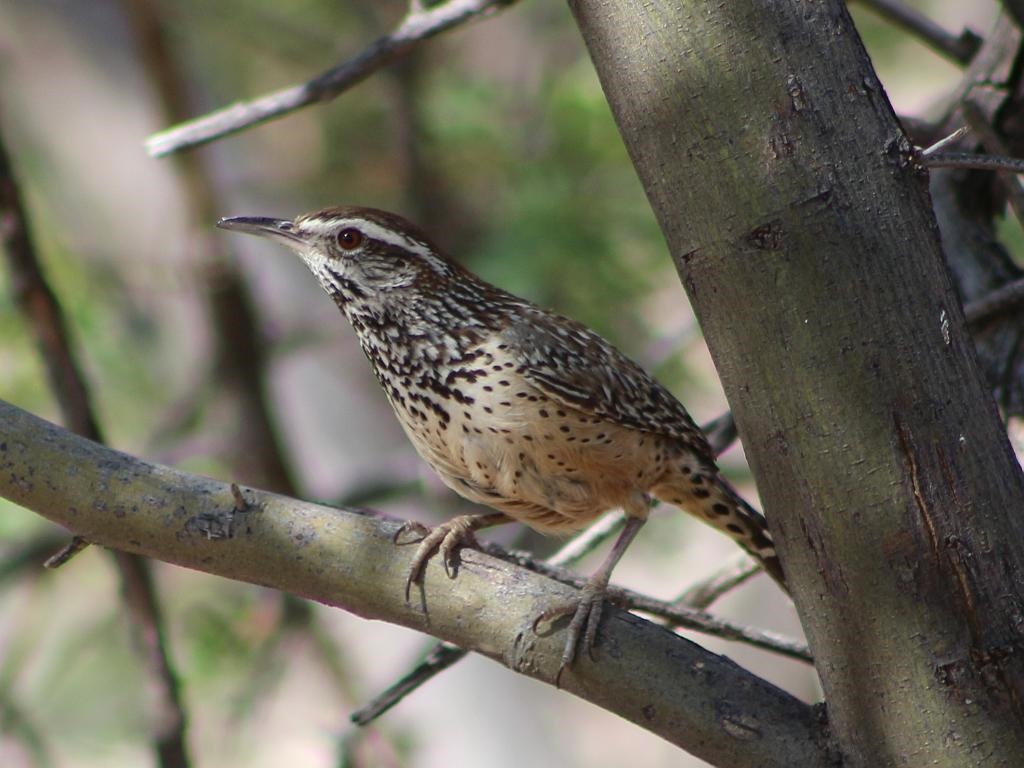I went outside this afternoon with the telephoto lens on the Canon SL1 to try my luck at capturing images of some of the local wildlife in their habitat. Damsel and I have already observed a couple of quail herding their spring chicks around but I had no such luck today.
I did see this cactus wren nibbling on the seed bell. I waited until it got off of the human-provided feeder and into this mesquite where it perched briefly for me to secure the shot. Click on the image to enlarge.
The cactus wren is the state bird of Arizona and, according to Wikipedia, has these additional attributes:
The cactus wren is the largest North American wren, at 18–23 cm (7.1–9.1 in) long. Unlike the smaller wrens, the cactus wren is easily seen. It has the loud voice characteristic of wrens. The cactus wren is much less shy than most of the family. Its marked white eyestripe, brown head, barred wings and tail, and spotted tail feathers make it easy to identify. Like most birds in its genus, it has a slightly curved bill. There is little sexual dimorphism.
My guess is that last dimorphism bit means that one cannot easily distinguish between males and females as is the case with many other birds. Why not just say that in the first place?


Sexual dimorphism basically is the gender difference(s) in appearance between males and females of the same species. Dimorphism (without the adjective sexual) is the difference between two or more animals of the same species, as to color or structure or other characteristics, not necessarily dependent upon gender.
Anyway, I wanted to say, that is an excellent shot of the wren.
I should have also pointed out that dimorphism is not merely a difference between animals of the same species but is rather the differences in color, shape, structure, etc., between two distinct forms of the same species.
I like the new camera and telephoto lens – the combination gets me much better pictures than the old point and shoot.